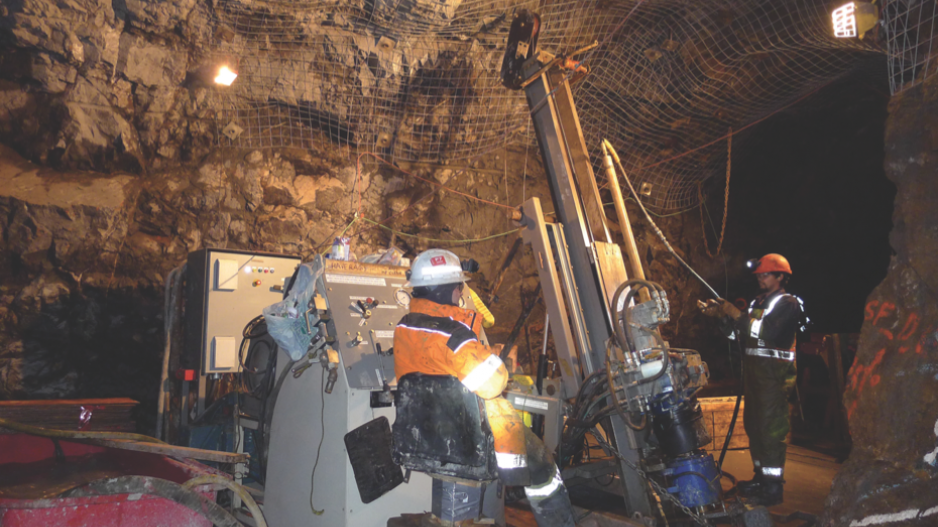In 2014, BC Hydro completed the $746 million, 344-kilometre Northwest Transmission Line to electrify the northwest corner of B.C. – known as the Golden Triangle because of all the undeveloped gold and copper deposits in that region.
The first new mine to be built in the Golden Triangle was Imperial Metals’ (TSX:III) Red Chris copper mine. It was followed by Pretium Resources Inc.’s (TSX:PVG) Brucejack gold mine.
That’s two down, and about 10 more to go.
So, what is likely to be the next new mine to be built in the Golden Triangle?
Although the Seabridge Gold (TSX:SEA) KSM copper-gold mine already has its environmental permits, some industry insiders say the $5.5 billion mine is a “generational” project – something so massive that it might take many years and sustained higher copper prices before it gets financed.
If Brucejack is anything to go by, smaller, high-grade gold mines stand a better chance of being built in the current market in B.C., which is why the odds seem favourable for Red Mountain – now under B.C. Environmental Assessment Office review.
Owned by IDM Mining Ltd. (TSX-V:IDM), Red Mountain is tiny compared with KSM. Its estimated capital cost is just $135 million.
Some underground work already took place in the 1990s for a bulk sample, but the project was never developed, and the property changed hands numerous times before IDM CEO Rob McLeod acquired the property from Seabridge.
The project is just 11 kilometres from Stewart, where McLeod was born and raised. It’s a short tie-in to power lines, and because workers could live in Stewart, there would be no need to build a work camp.
“Since there is such a long history of mining in Stewart, one of the great benefits is that we’ve been able to get locally sourced miners, including many that wish to move back to Stewart who have since moved away,” McLeod said.
He added that it would take about a year and a half to build the mine and bring it into production. It would employ about 300 workers during peak construction, and a total of 220 workers who would be employed at the mine.
“We are very excited about a new mine in our boundary and job opportunities from this mine for local people,” said Galina Durant, mayor of Stewart. “As this mine is not too big, I think we will able to accommodate all needs – social, infrastructure, housing.”
Red Mountain’s gold and silver reserves are said to be high grade, but the mine would have a short production life – about six years – with an average annual production of 78,000 ounces of gold and 215,000 ounces of silver, and a payback period of just two years.
“We have six years’ worth of reserves that are drilled out,” McLeod said. “I am optimistic this mine will go for decades, like many mines do.”
One of Red Mountain’s challenges is its elevation. It is nearly on top of a mountain. The deposit was discovered in the late 1980s thanks to retreating glaciers.
“Our biggest challenge right now to further exploration is that all of this is helicopter supported,” McLeod said.
“So regardless of how efficient you are, it is roughly three or four times the cost of drilling if, say, you were in the gold belt of Ontario or Quebec.”
Mickey Fulp, publisher of the Mercenary Geologist, thinks IDM is going to have a tough time building the mine, because it’s too small and remote to attract investors.
“IDM’s Red Mountain is much too small to be developed given its remote location and climate difficulties,” he said. “It would have to dramatically increase in size with the same grade.”
Joe Mazumdar, a geologist and analyst with Exploration Insights, said the mine can be built, but will likely be another Brucejack – a project that no major mining company would be interested in acquiring.
“It’s not a project that would attract very many to come in and buy, but it might attract private equity,” Mazumdar said.
In other words, if the mine is to be built, IDM should not count on a major miner buying the property and putting it into production. It will have to develop the mine on its own, like Pretium did. McLeod said IDM is prepared to do that.
“It’s our intent to build this project. However, if a company comes in and offers a significant premium, of course we’d take it to the shareholders. But in general we don’t consider ourselves for sale.
“There is no shortage of different opportunities to finance a high-margin deposit like this.” McLeod added that a feasibility study shows a payback period of less than two years, which should be attractive to potential investors and lenders.
“It’s high grade and cheap to mine,” McLeod said. “It’s our ambition that IDM would become a dividend-paying stock, which would be a rare thing.”
In February, Osisko Gold Royalties Ltd. (TSX, NYSE:OR) took a $15 million stake in the company, and IDM’s executives chairman, Michael McPhie, is managing director for JDS Gold Ltd.
“With JDS involved, and their close tie to people like Denham Capital, you can see them having enough to go to some of these private equity guys and get financed,” Mazumdar said.
The environmental review period for Red Mountain is scheduled to conclude in May 2018. Should the project get its environmental certificate, McLeod said construction could start as early as the summer of 2018.
“Our objective would be to have our first gold pour two years from now, and then full commercial production early in 2020.”




